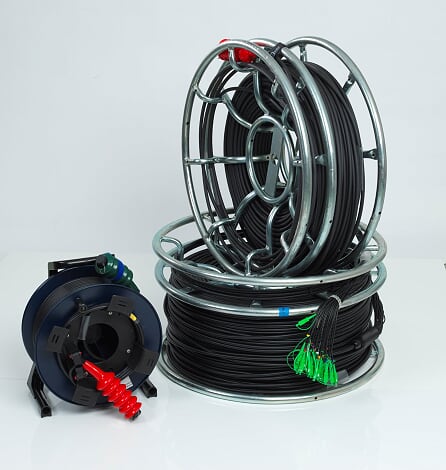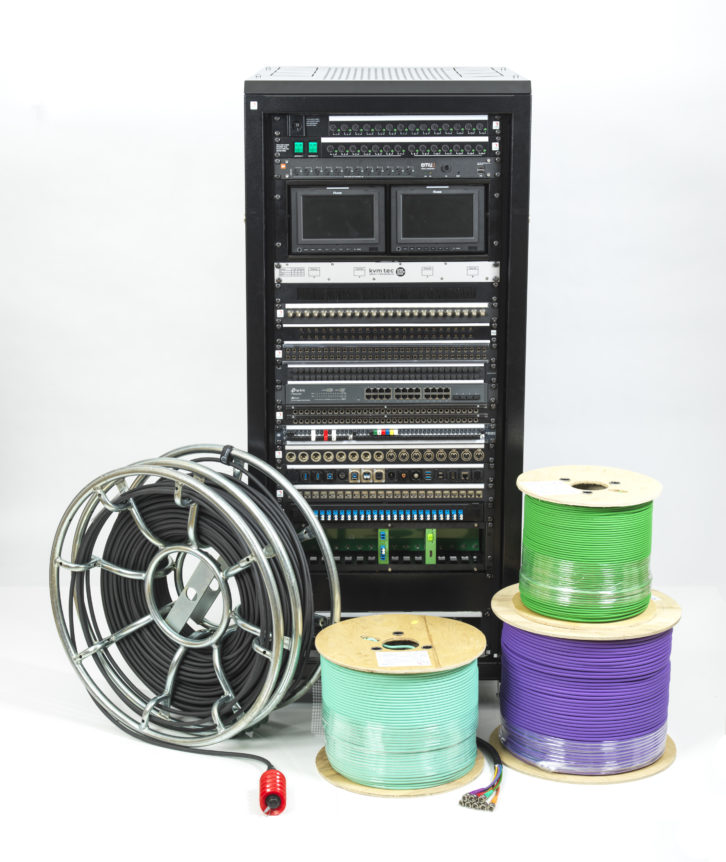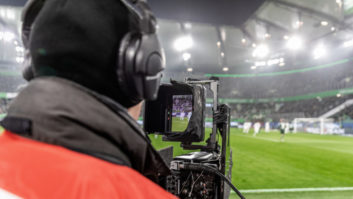We are all living in uncertain times: the global pandemic has caused huge disruption through isolation, social distancing and travel restrictions. While no-one has escaped the effects, broadcasters have had to face very specific challenges – especially when it comes to the world of sport.
Will events go ahead? What restrictions will be there around crowd, coverage and athletes? Will the venue be shifted at late notice, or will the event be postponed?
There are countless high profile examples of this. In golf, the US Masters – probably the most popular annual event in the game – was forced out of its regular April slot in 2020, meaning there were two contests within five months of each other, in November and April 2021. Football seasons saw massive disruption and wrangling about promotions. And, of course the world’s biggest multi-sport event saw its 2020 Tokyo edition postponed for a year.
Along with these one-off events, many venues had major construction and refurbishment projects. Some have been placed on hold; others have suffered severe delays.
What is the relevance to the broadcast technology industry? It has created a great deal of uncertainty. Vendors, who try to plan seamless delivery programmes based around the sporting calendar and often on historical timings and planning for these events, have had changes forced upon them. What has recently been a frequent occurrence of deferred orders can be disruptive to cash flow and affect stock planning.
But the complex situation has also seen orders brought forward, which also can also put pressure on vendors. For example, one of the systems integrators we regularly supply, C2S Media, called us on a Friday in February 2021, needing fully tested, guaranteed plug and play cabling to be flown to Cameroon on Monday for the (postponed) Africa Cup of Nations. We responded quickly and met the deadline, but it did mean a very long weekend in our workshop.
For another customer, we were asked to supply a huge amount of structured cabling, which needed to be shipped by sea to Japan for what would have been last summer’s major event. We got all the cable in and had started work, but before the shipping date the event was postponed and the order was cancelled.
Our experiences are being mirrored right across the industry. Suppliers of every piece of technology in the ecosystem will have planned production runs and increased stock to meet the anticipated demand.
That is very important. With few exceptions, it is somewhat of a logistical challenge for specialist broadcast and media suppliers to change plans overnight. Assembling, say, the optical block for a studio camera is a highly specialised task. It is time-consuming, and you certainly cannot recruit staff overnight to be able to do it. Additionally, things like pre-cabling are always custom built to very precise/explicit specifications.

Take our multiple tactical fibre assemblies, designed for outside broadcast applications, where cables are roughly handled on a regular basis. Tactical fibre is used for a range of signals in outside broadcasts, carrying multiple signals over long distances. Installation on site means dragging the cable through ducts or across open ground. This inevitably leads to damage to the terminations and affects signal integrity. Broken connectors means expensive repairs, and a gradual shortening of the cable which makes it less useful and eventually unusable.
We’re very conscious of being able to deliver a high return on investment and a longer service life by protecting the fibres from damage. The fibres we provide are protected in a breakout which prohibits them from rotating under use, and the entire end of the cable is protected with a captive heavy duty pulling sock. This solution ensures that the load under deployment and recovery is transferred directly to the aramid in the tactical cable, and when laying on the floor protects against crushing of the breakout. Often, these solutions are customised.
Workshops and production lines are usually sized for typical requirements. Where there is an anticipated surge in demand, this has to be planned well in advance. It is worth remembering that, in the four-year cycle of major events, 2020 was the big one, with the American presidential election as well as all the major sports. The pandemic had an effect on all of them: the election obviously took place, but without all the major rallies and stump tours.

The secondary effect of the pandemic on broadcast is that it has accelerated the growth of remote production. Working from home became the norm, and while some relied on Zoom, many production companies created home studios for on-air talent, requiring smaller cameras and modest lighting set-ups. That was another driver for studio developments to be put on hold: would we need the same facilities in future?
Remote production in sport means fewer large OB trucks on the road with their limited productivity (they do not earn while moving from racecourse to football ground to opera house), with more live control rooms in broadcast centres. IP connectivity has opened up large-scale remote production, which implies software-centric control rooms and consequent changes to the technology base, not to mention completely different cable requirements.
This continues to be a particularly challenging time for everyone in broadcast and media. For vendors, there is uncertainty at every level from cash flow to developing a commissioning and training strategy when you cannot visit the customer site.
The distinguishing characteristic of our industry, though, is the level of co-operation, communication and collaboration between vendor and user, and consequently the shared sense of responsibility. Good vendors show their commitment to the industry in setting out their business priorities.
Our customers have high expectations that we will deliver what they want, when they need it. We just need to be even better at predicting those demands, whatever the circumstances. Being flexible to changing business needs, be they financial, resource-related or organisational is key to any business’s survival. Being more agile and streamlining working practices and processes, ensuring proper financial and stock forecasting, while allowing for even more contingency to be built in will safeguard businesses into the future. Being able to pivot and react quickly is where a good vendor stands out – and something Argosy is proud to be able to say.







